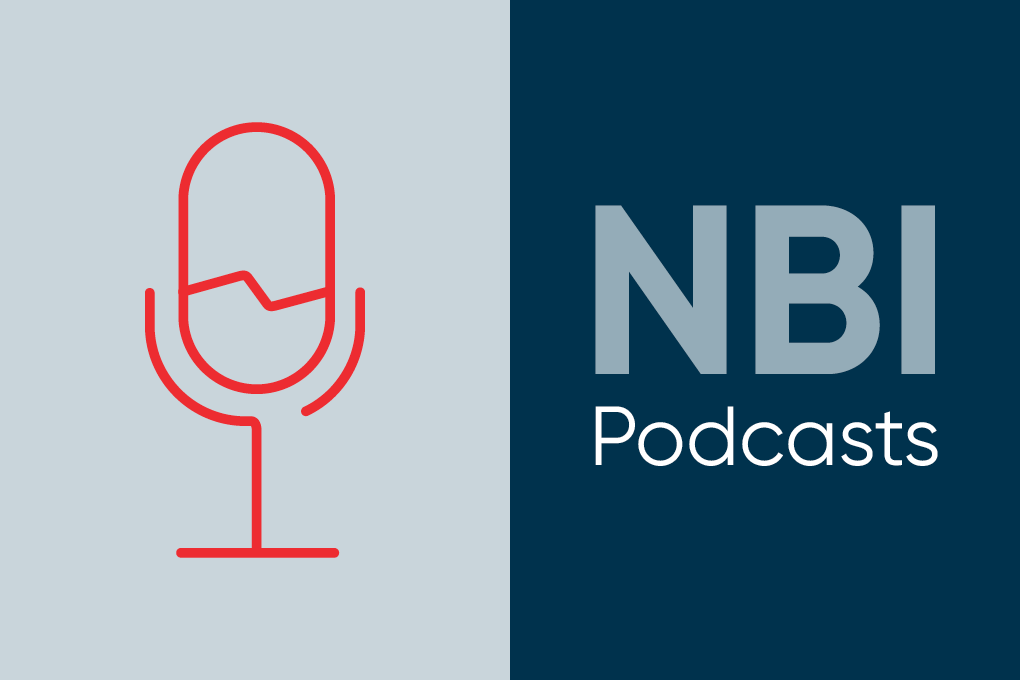Terry Dimock
Welcome to NBI Quick Takes. My name is Terry Dimock, Head Portfolio Manager for National Bank Investments. I’ll be your host for a three-part series focused on real assets.
First of all, a disclaimer. BNY Mellon Asset Management Canada Ltd. is the portfolio manager of the NBI Global Real Assets Income Strategy and its affiliate, Mellon Investment Corporation, is the subadvisor. Today, we are joined by Mellon portfolio managers, Jim Lydotes, and Brock Campbell, to chat about real assets. This discussion is for general information only and should not be taken as advice or a recommendation to purchase individual securities.
My guest for this second episode of three is Jim Lydotes, lead manager of the National Bank Global Real Assets Income Fund. In this episode, we’re going to spend time on telecom infrastructure, which is so important for our personal lives and also our business lives.
Welcome, Jim!
Jim Lydotes
Thanks Terry. Thanks for having me on.
Terry Dimock
We’re happy to have you with us.
Let’s talk about telecom infrastructure. What is telecom infrastructure and why are they good investments?
Jim Lydotes
There are three parts to telecom infrastructure. There are towers, cable and fibre. Historically, when people think about telecom infrastructure, mainly their minds go to towers. Towers are big, they’re ugly, most people don’t generally want a tower in their backyard. I know I certainly don’t want a tower in my backyard. It’s very difficult to get permits to build towers for just that reason. This has historically set them up effectively as natural monopolies. If you think about the business of a tower, there’s very little ongoing CapEx required once a tower has already been built. When a tenant wants to add equipment to a tower, generally they have to pay for that.
So the revenue of the tower grows with data usage, and when you put that all together, you have an asset in place that costs close to nothing to operate on an ongoing basis, has pretty much a monopolistic position where it’s located, and with steady and consistent revenue growth, there are really few assets in the infrastructure space so well positioned to grow, especially when you consider the outlook for continued growth of data usage.
Terry Dimock
And as you just said, we’re just using more and more data every single day. Maybe you can talk about how data actually travels from point A to point B, and how do towers, fibre, data centres, how all of that functions together.
Jim Lydotes
When you speak into your cellphone, there’s a little chip in your phone that converts what you say into a series of numbers. Those numbers are then translated in a radio wave to the closest cell phone tower. So if you’re calling another person on the same network and in the same area, like one of your neighbours, that signal is going to go from your phone to the tower and then bounce right over to their phone and really that completes the connection.
But if that call needs to go to another person on another network or further away, then fibre will bring what’s called backhauled data to another location in the network where it will then be routed to the nearest cell phone tower to that recipient.
If you think about data centres, generally data centres are not involved in the daily transmission of phone calls but are often the end location of data traveling out of your phone and stored in the cloud. If you’re an iPhone user, and you’re storing pictures in the cloud, once you take that picture it’ll travel through that network and end up in a data centre where it’s stored in the cloud.
Terry Dimock
We’re starting to see a lot of advertising on 5G. Every provider seems to have their flavour they’re talking about rolling out. What really is 5G and why does it matter?
Jim Lydotes
First of all, why it’s called 5G: 5G is the fifth-generation network, effectively the latest wireless standard. It’s expected to be up to one hundred times faster than what we’re on right now, 4G. So if you think about what that actually means, that’s going to allow you to download a two-hour movie on your phone in less ten seconds. Right now, that would take roughly seven full minutes on a 4G network, so tremendously faster than what we have right now.
This is an entirely new technology and it’s built on something called a high-band spectrum. A high-band spectrum is great for latency or lag, which is effectively the time it takes between me sending you a text and that text message popping up on your phone. And this is an issue that’s critical when you contemplate high-speed robots moving around a factory floor around people, or imagine how critical latency is with self-driving cars speeding down the highway at 100 km/h.
The one problem 5G is that these signals, while they’re moving very fast, they can’t go very far. They have a tough time going through walls, through windows, hard surfaces, very hard time getting through brick. As a result, telecom companies, they need to roll out a ton of small cell sites on light poles, on walls, and really the deployment of that has to go city by city. It makes sense for that telecom company to really start attacking the most congested cities. That’s where it makes sense where they can spread the cost of that over the most amount of people and essentially today that’s what you’re seeing. You’re seeing 5G rollouts really happening in the most dense locations. It’s quite possible that given the nuances of 5G, it may never make sense for them to roll this out in rural areas.
As we connect more and more devices, the commercial devices connected will increasingly need this better level of services. By 2025, so only five years from now, there is going to be eight billion global cell connections, so more than one global cell connection for every person in the world , but there is going to be more than five times as many connected what’s called IoT – internet of things – devices. The world is digitalizing faster and faster: in three years, 70% of the world’s automobiles are going to be connected to the internet. If you think about 10 years ago, there probably weren’t any cars connected to the Internet, and in a few short years, 70% will be connected.
Things are changing fast – health care monitoring, autonomous vehicles, automated factory floors – there are increasingly more and more connected applications that are going to require the low latency that only 5G provides. There are increasingly more commercial applications that didn’t make sense or wouldn’t work on 4G that are now going to be possible because of this new technology.
Terry Dimock
Jim, are you telling me that my wireless bill is going to go up in the next few years?
Jim Lydotes
Telecom companies have their way, Terry, absolutely. I’d say there are two benefits to the telecom companies by moving to 5G. First is, if the better companies, the ones that do a better job of deploying this network, are going to be able to differentiate themselves on network quality and charge you more money for your bill. And if you want better service, better 5G coverage, you’re going to have to pay that.
Over the last decade, consumers have largely on a global level been unwilling to pay for better network coverage because it’s been really tough to differentiate yourself on the 4G network on quality. It hasn’t been the best industry. For consumers that’s great, we’re consuming more and more data, we’re not spending any more money. As we move to 5G, I do believe that will change, and the better providers that do a better job of putting out a better network are going to be able to charge you more on a monthly basis.
But the other way that this is going to help the telecom companies that roll out this network is the commercial applications that they’re going to be able to charge for. There are very few commercial applications that are running on telecom networks today. That is going to change. As we’re rolling out more and more internet of things connected devices, more and more of these are going to have commercial implications, and that’s effectively a new revenue stream for these telecom companies that they’re going to be able to exploit.
Terry Dimock
Let’s talk about the industry itself. What is the state of the industry and why is consolidation such a big deal?
Jim Lydotes
The low range of 5G, as we talked about a little while ago, requires just a ton of small cells to be deployed. And once they’re deployed, the capacity on that network is going to be enormous. What that means in practical terms is that once you invest all of that capital to build out a full small cell network, the network is really going to be incredibly underutilized for a long period of time. Even with data usage growing more and more – and we don’t think that’s going to slow down – even if you look out a handful of years from today, we’re going to have a lot of excess capacity on these networks. 5G is effectively going to be the network in place for the next decade.
Prior to launching multiple parallel small cell networks, consolidation just makes so much sense. Given the abundance of network capacity once the network is put in place, I really do believe this argues for more consolidation today than we’ve seen over the lifecycle of 4G, and really I’d say we would expect to see more of that before these companies have to deploy that capital to roll out this network. If you’re a sub-scale player, it really just does not make any type of economic sense to roll out this network if you don’t have scale.
In a lot of Europe, we have yet to see the widespread consolidation that we have seen in other parts of the world. This is really the area where we would expect to see this accelerate. More consolidation ahead of the network buildouts, because also, in many places, we just quite simply have too many players in markets too small to support them. I think the rollout of these 5G networks, or just looking at the rollout of these 5G networks, are going to be the catalyst for consolidation. You couple that with all-time low valuations, I really think it’s a nice set up for a backdrop of seeing increase consolidation in the European telecom space.
Terry Dimock
Thank you very much, Jim. Thank you for your insight on this sector. Today, we spent time understanding the telecom infrastructure, which is another really important part of real assets. Stay tuned! Our last episode is going to focus on transportation, which is another key part of investing in real assets. Thank you for listening and have a good day, everyone.


 Terry Dimock
Terry Dimock

 James A. Lydotes
James A. Lydotes
